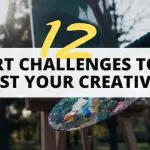Ok, so you’re desperately looking for ways to improve your art skills, but you don’t know how or what to do first…
Hang tight. Because I’m going to share 7 tips to help you improve your art skills and get out of the friend zone with your creative muse.
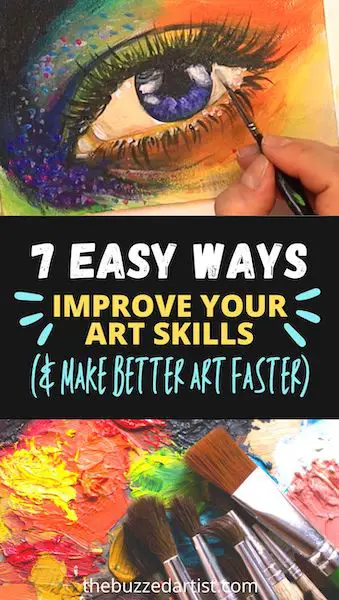
7 Easy Tips to Improve Your Art Skills
Follow along with this video or keep reading to see these easy tips to make better art faster.
Tip 1: Use a reference
For some god forsaken reason, there are some artists out there that believe using a reference when painting or drawing is cheating.
And that’s… just dumb. Really dumb.
I use references constantly to help me understand where my color values are, what my proportions should be, where my light source is coming from…among many other things.

So the next time you are sitting down to draw or paint something, find a reference that closely matches what you are thinking of making and use your powers of observation to make truly amazing art.
Not sure where to find reference pictures? You can use a myriad of sources including copyright-free image platforms like unsplash.com and pexels.com to taking your own photos (with model consent if necessary).
Tip 2: Focus
Using focus is probably one of my favorite and useful art tips.
A lot of times when I’m painting or drawing (and life in general), I try to do too many things all at once.

Full body drawings, painting a huge landscape with complicated trees, trying to find my own style.
Just….stop.
When I’m unfocused and can’t figure out what to do first, my art just feels muddled, confused, and lacks a main idea.
So instead, I choose to focus on one thing to improve or work on.
If I want to paint eyes, paint lots of eyes. Working on human proportions? Draw lots of poses and gestural figures.
Choose one thing to work on and stick with it until you’re feeling comfortable. Then, choose another focus and work on that. I know it’s not glamorous, but it works.
You don’t have to master all the things at once. A bit at a time really goes a long way to help you shape your skills.
And if your focus is as sharp as a beach rock, you’ll probably benefit from doing a series of creative exercises to better fire up your brain – one of my personal favorites is reverse coloring.
Read more about why reverse coloring is an absolute game-changer for your art skills.
My Printable Reverse Coloring Book
A DOWNLOADABLE Backwards coloring book featuring 40 pages of high resolution colorful paintings – simply draw the lines and doodle away the art block!
Tip 3: Use a Limited Color Palette
Now, this kind of goes with the focus thing but I felt like I needed to mention this on its own.
Lots of beginner art supply kits come with 40-60 colors in them, and I think that’s more harmful than good especially if you’re a beginner artist or you’re feeling stuck.
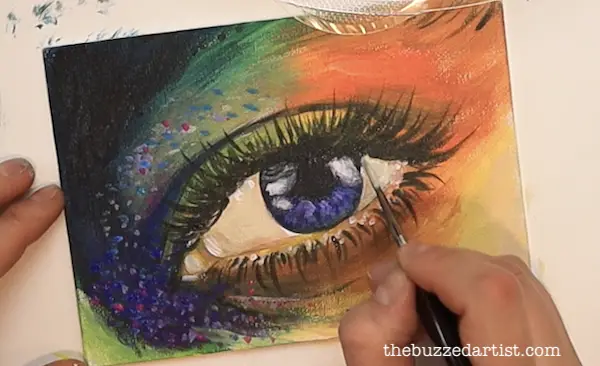
If you give yourself an unlimited amount of color to choose from, you’ll feel your art being overwhelming and out of focus. And you’re probably walk away thinking colors royally suck.
Instead, focus on using a limited amount of colors.
Try using just primary colors or just 4 colors of your choice and make some art based on that. I’ve seen lots of artists do this and they walk away learning a great deal more than if they used all the colors of the rainbow.
and just to prove my point even further, this painting I created here was made only using 5 colors. Boom, roasted.
Tip 4: Don’t Get Attached- Do Speed Paintings!
If you’re really not feeling it or can’t get out of your head, set a timer for 1 minute and do a speed paint or draw of a subject.
This exercise is quick and for good reason. See, if you get caught up in the net of perfection, a lot of the time, you’ll never end up making anything because your dumb brain doesn’t know what it wants.
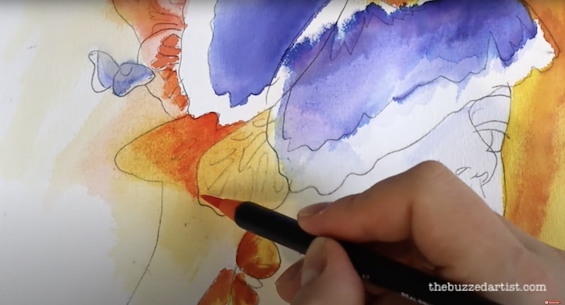
Instead, sit down and quickly draw or paint something out. Make a face. Draw a landscape. Paint a hamburger. The subject doesn’t truly matter. What counts is getting the essence of the topic quickly out of your head and onto canvas.
Tip 5: Treat Art Like a Journal
I used to keep a diary and I always made sure to write something for each day. Sometimes, I would write paragraphs on paragraphs about my Sailor Moon obsession….
….while other days, I would write a 3 word sentence like, “I ate soup. The end.”
Creating art is kinda the same thing.
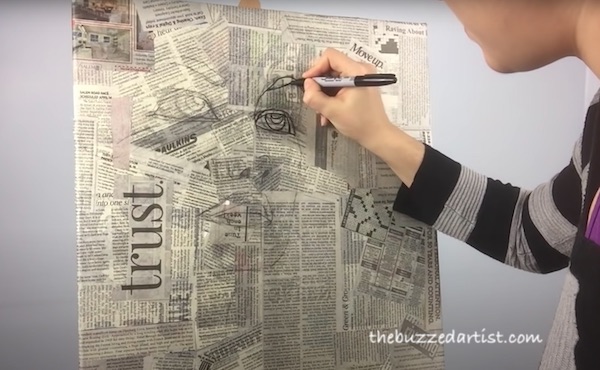
Sometimes you’ll be pouring your soul on canvas and have lots of ideas. Other times, you’ll make 4 lines and call it a day. That’s also ok.
When I think about how every brush stroke is my way of expressing something – whether it has some purpose or not, suddenly making just 3 lines feels good enough. What matters is that I went and made those lines a reality on paper.
Tip 6: Do Art Challenges
Art challenges are incredibly creative ways to get your brain out of boring stuck mode and into improv. I personally cannot endorse them enough because of how effective they can be to firing up your art skills.
It forces me to think about my art differently whether it be using new mediums like newspaper collage or painting just using a toothbrush. You’d be surprised at what you’ll discover.

Want to see what art challenges you can try? Read my Art Challenges You Should Try post here.
TIP 7: FIGURE OUT YOUR WHY

Making art is tough on its own, and if you don’t quite understand what drives you to create, you’ll find yourself meandering in the vast sea of uninspired soup. Enter your WHY.
Knowing why you want to create art can help you get a sharper focus on your goals and the meaning behind your art.
Do you create art because it relaxes you? Do you want to sell your work? Do you create art so you can be remembered for many generations?
The answer is totally unique to you. So if you haven’t figured out your why yet, here is my step-by-step post on how to discover your true motivation for making art.
Read More: Find Your Creative WHY and Bust Through your Creative Block
Let’s get painting, my artist
Creating art can feel like a challenge – and that’s OK. Art is supposed to feel hard sometimes. With these tips, use this as motivation to keep pushing through the creative blocks and push your art skills to a whole new level.


